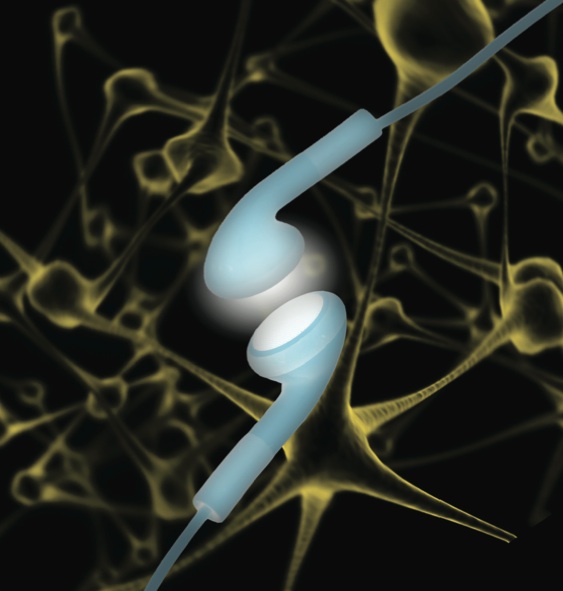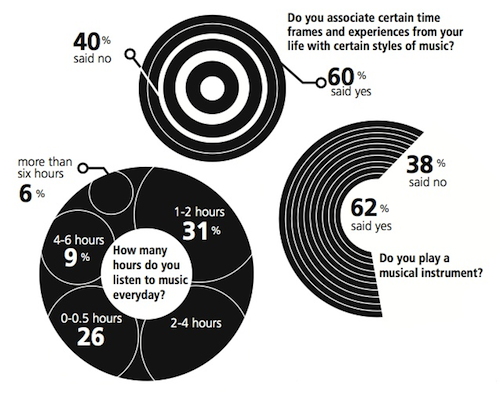On Jan. 8, 2011, congresswoman Gabrielle Giffords was shot in the head outside of a Safeway in Tuscon, Arizona. The bullet passed through the part of her brain that controlled speech and language comprehension. Her skull was cracked head.” like a sheet of glass.
Two weeks later, still in the hospital, Giffords was mute. She had forgotten words like “watch” and “jacket,” so her therapists tried to coax her into remembering. But the main aid wanted to Giffords’ recovery was something else entirely: music.
Because the comprehension of music is controlled by many parts of the brain that do not correlate with language, Giffords could remember lyrics and relearn words by using the portion of her brain that was not damaged. Soon, Giffords was singing along to Cyndi Lauper’s “Girls Just Wanna Have Fun.” She began to remember more than words: Giffords recalled her and her husband Mark Kelly’s first date, the name of the waitress who worked at the restaurant she ate at the night before and the man with a gun.
Now, 13 months after the shooting, Giffords can speak and walk, having overcome paralysis on the right side of her body. Her unexpected recovery is a powerful example of the hidden effects music can have. Students are constantly analyzing, creating and listening to music, but only recently has given us greater insight into how it affects our minds.
Soundtrack of my life
The tinkling sound of an ice-cream truck driving by can bring you back to a specific instant in your childhood, just as the chords of a familiar song can remind you of a person in your life. Music and memories are inextricably linked together, but how exactly does the brain process music in order to recall memories?
Music is, of course, picked up in the ear, where sound waves are converted into vibrations and then into electric signals. The auditory cortex in the temporal lobes on both sides of the brain receive the information. The forebrain analyzes the song, and the tune is processed by the nucleus accumbens and ventral tegmental areas. These areas, which control pleasure and are located near the center of the brain, release dopamine, a chemical that induces positive feelings in the listener.
In 2009, researchers at the University of California, Davis used fMRI scans to identify the link between music and memories. They found that the region of the brain which connects the two is the medial pre-frontal cortex, which is just behind the forehead. Petr Janata, the associate professor of psychology at UC Davis, compares a familiar tune to a “soundtrack for a mental movie that starts playing in [your] head.”
For AP Music Theory teacher Jon Fey, songs from his high school days hold the strongest emotional connections. When he hears Journey on the radio, he remembers a girl he had wanted to date, while the song “Still a Long Long Way to Go” by Phil Collins is even more evocative of memories.
“[When I hear that song,] I have very, very strong memories of a girl I knew in high school who killed herself, and I really attached myself to that music, listening as I was grieving, and as I was getting through that whole situation,” Fey said. “Whenever I hear that song, I think of her, and that time of my life when I really felt like I had no direction, because here this person who was in my life was now gone.”
The fact that Fey’s strongest memories associated with music come from his youth confirms Janata’s research showing that the mental associations between music and memories are strongest among children. These mental connections are also among the sturdiest of any associations, because the prefrontal cortex is one of the last regions in the brain to weaken from disuse. As a result of this, even in old age, music can evoke memories and recollections from the days of our youth. Even patients with Alzheimers, who showed signs of memory deterioration in almost all parts of the brain, exhibited signs of emotional recognition when they were played songs from their youth.
While it may only be special songs that initiate mental pathways leading listeners to specific memories, a far more common effect of music on the mind is that it elicits an emotional response.
“I think we’re affected by the things … that we listen to because they’re communicating something to us that is more personal,” Fey said.
According to Fey, emotion in music often comes about in two forms: sometimes composers write music intending to evoke a certain emotional response from their listeners; sometimes, composers attempt to capture their feelings and ideas in the moment of songwriting.
The reason music can create such strong emotions in the minds of listeners has two parts: the explanation is partially neurological and partially psychological. According to the Harvard Gazette, the neurological component has to do with the location of the parts of the brain which recognize sounds and process emotions. The auditory complex, which recognizes music, is linked with the frontal cortex, which controls abstract thought. The frontal cortex is also a gateway to numerous other regions of the brain that create emotions. The psychological component deals largely with expectations. According to musicologist Leonard Meyer, the emotional recognition of music is influenced primarily by music-listener’s expectations with regard to musical qualities like tension and stability.
There are specific compositional distinctions that can affect mood. Happy music generally is in a major key with relatively quick rhythms. Sad music, on the other had, is usually in a minor key and slower. Beyond this, however, more complicated musical techniques like chord patterns, harmony and tonality can also influence the emotions of the listener.
Even if we cannot notice or distinguish these compositional techniques however, they still have the power to influence us: we all feel this, and some feel it stronger than others. For junior Saee Bhide, who has been a singer since childhood and is currently a member of Variations, emotions play a large role in the appreciation of music.
“Ever since I was young, one of my favorite songs ever was ‘My Heart Will Go On’ by Celine Dion. It was one of the first songs I learned to sing when I was younger and I’ve been singing it all the time. I think that song has a lot of emotion associated with it and it’s the kind of song that, even if I’m not feeling sad, I can just listen to that song and hear the words and sing along and it will make me want to cry,” Bhide said.
A musical education
Music, memories and emotion may be intrinsically tied together, and music actually helps people remember facts and figures.
“I think the learning of music exercises the brain more than just reading a book or being lectured at or being talked to or the normal course of growing up. It exercises the brain a different way,” Fey said. According to Fey, studies have shown that music students score better, and this is because of the challenges the brain faces when it is exercised in a musical way.
Research conducted at the Chinese University in Hong Kong in 2001 seems to corroborate what Fey thinks. Researchers took scans of volunteers with a great deal of exposure to music and found that they exhibited enlarged left planum temporales, the area of the brain which controls verbal memory. Musically-trained subjects were also able to better recall words from a random assortment that was read to them.
While simply being trained in music seems to improve only verbal memory, listening to music can create associations that can later be recalled. Memory is oftentimes tied to context. Say, for instance, you study while listening to a certain song. When you are asked to remember thatmaterialthenextday,listeningtothesamesonghelpsyouremember what you studied. While the brain’s total memory capacity is difficult to increase, pathways from music to facts can be formed.
It is easy to take music and its affects for granted: to come home, plug in some earbuds, and let the music wash over you. However, it also has the potential to invoke memories, call up emotions and even heal people. It is only by understanding the neurological basis behind these processes that we can truly comprehend why music is as important to people as it is.






















